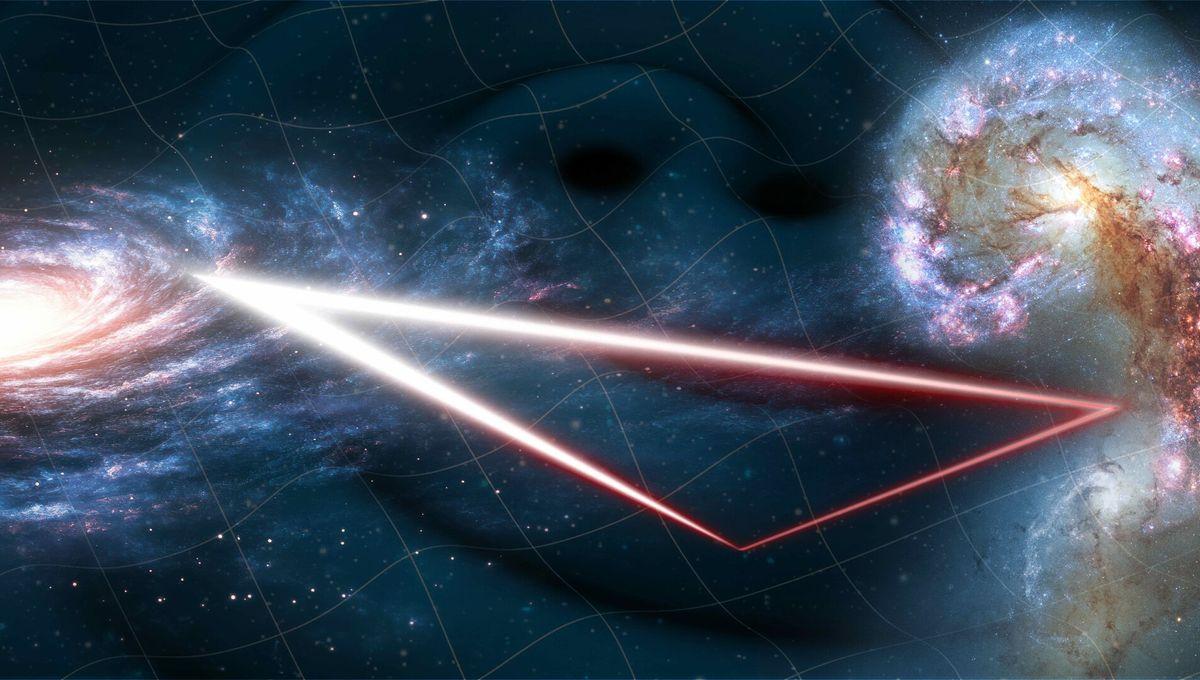-
Noticias Feed
- EXPLORE
-
Páginas
-
Blogs
-
Foros
Largest Ever Space-Based Gravitational Wave Observatory Begins Construction

Largest Ever Space-Based Gravitational Wave Observatory Begins Construction
LISA, the Laser Interferometer Space Antenna, will be a revolutionary instrument that will allow humanity to observe gravitational waves from events we can’t track with the observatories on Earth. They are simply not big enough. For such a task, three spacecraft will be flying in perfect formation while precisely shooting lasers at each other across 2.5 million kilometers (1.55 million miles). Construction of the spacecraft has now begun.
LISA is a project from the European Space Agency (ESA). Before this mission was possible, a pathfinder mission was launched and tested, demonstrating that it was possible to create the internal tech to measure the free fall of two golden cubes with a precision of 0.01 nanometers. These are the laser targets across the vast expanses of space. The spacecraft will be 6.5 times further from each other than the Moon is from the Earth. Similar to gravitational observatories on Earth, the laser light is the crucial component of the detector. Gravitational waves deform space-time, shrinking it and stretching it. By precisely measuring the length of the lasers, the setup can tell if gravitational waves have passed through. Also, unlike the observatories on Earth, the distance of the arms will vary slightly in their orbit, and the system will take that into account. The spacecraft that make up LISA will form a laser triangle in space. Image Credit: ESA ESA has selected OHB System AG as a development partner, with Thales Alenia Space developing several components for the mission. NASA was supposed to contribute to the mission too, but the Trump Administration’s budget request cut that funding. Still, even without US involvement, LISA is expected to be launched in exactly one decade, two years ahead of the original plan. “We are immensely proud that ESA and the scientific community entrust us to implement this groundbreaking science mission. Together with our partners we stand ready to bring LISA to life – pioneering our ability to ‘surf gravitational waves’ and enabling us to see our Universe in a new way,’ Chiara Pedersoli, CEO of OHB System AG, said in a statement. “I’m delighted to celebrate the contract signing today with our partners at OHB who will lead on the implementation of this truly ambitious endeavour. LISA represents many years of pioneering technology developments, hope and belief of our scientific community, and steadfast support from our ESA member states. As the first space mission designed to capture gravitational waves, LISA will open a brand-new window on the dark Universe and test the known laws of physics to their extreme,” added Professor Carole Mundell, ESA’s Director of Science. “When it is flying, LISA will also represent the triumph of precision engineering and international cooperation on a new scale, and place Europe at the forefront of space technology and fundamental science.” LISA is expected to measure gravitational waves from supermassive black hole collisions, those emitted by small objects like white dwarf binaries, and even by planets around those binaries. It will independently measure the expansion of the universe, and so much more.


